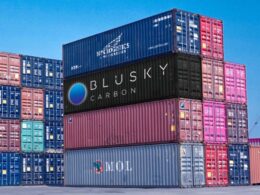Bloomberg has unveiled significant upgrades to its climate solutions suite, designed to help investors evaluate whether companies are on track to meet carbon emission goals, assess the credibility of those targets, and estimate the impact of different transition scenarios on company revenues.
These enhancements offer a comprehensive view of transition risk, including forward-looking assessments of revenue risks and opportunities across various climate pathways, utilising detailed data from BloombergNEF (BNEF). Investors can now better gauge transition credibility and pinpoint leaders and laggards by answering four key questions:
– Are companies setting carbon targets, and are they on track to meet them?
– How credible are these targets based on current actions?
– What future GHG emissions can be expected based on these commitments?
– How will transition scenarios, such as BNEF’s New Energy Outlook (NEO), affect company revenues?
These insights enable investors to align their portfolios with net-zero objectives and capitalise on opportunities in the transition to a low-carbon economy.
For the first time, BNEF’s model for assessing bottom-up transition risk is available through the Bloomberg Terminal and via Data License. The Transition Risk Assessment Company Tool (TRACT) forecasts revenue risks and opportunities for over 70,000 companies. It considers a company’s activities, supply chain exposure, and regional footprint, as well as shifting demand for products under different climate scenarios. TRACT benefits from granular data, such as BNEF’s New Energy Outlook (NEO), which captures policies, project pipelines, and technology trends across 20 regions. By September 2024, TRACT will incorporate NGFS scenarios.
“Less than a quarter of global emissions fall under an actual carbon pricing scheme. Sector and region-specific technology competition drives the transition, often rendering carbon intensity irrelevant, such as in sectors where no alternatives exist, like steelmaking or aviation. At BNEF we developed the TRACT model to fill this gap and provide clients with a granular approach to transition risk assessments”, said Alexandra Toft, Chief Operating Officer at BloombergNEF.
As more financial firms aim to decarbonise portfolios, Bloomberg’s expanded Net Zero data suite equips asset owners, managers, and banks—who collectively oversee more than $140 trillion—with tools to track progress and evaluate the credibility of corporate transition plans. Firms can integrate this data into their own risk assessment processes through Data License for enterprise-wide scalability.
Covering nearly 24,000 companies, these indicators show whether a company has set targets and is on track. Over 8,000 companies currently have active carbon goals. This interactive tool offers comparative scores and peer analysis, helping investors identify leaders, laggards, and engagement opportunities. With projections for more than 67,000 companies, these forecasts help investors assess the decarbonisation trajectory of their portfolios.
Edo Schets, Head of Climate Finance Solutions at Bloomberg said, “Our expanded suite of net zero solutions equips investors with valuable data that enables them to assess how companies are decarbonising. Whether focused on portfolio alignment or identifying transition opportunities, investors now have the insights they need to set more informed long-term investment strategies.”
Climate Financial Data And Analytics Providers 2024 report has positioned Bloomberg as a leader in providing comprehensive transition risk analytics at both asset and portfolio levels, as well as robust carbon emission and energy transition solutions.





















